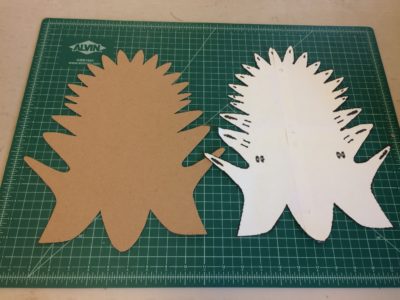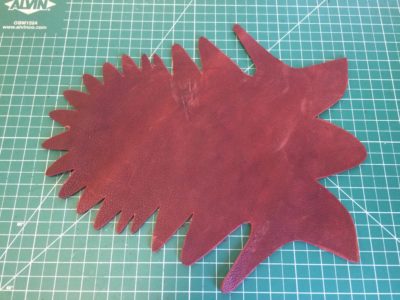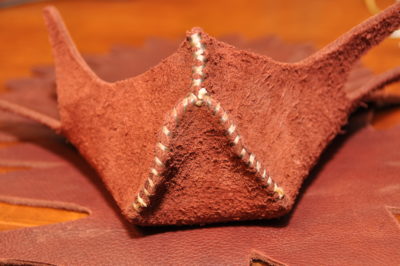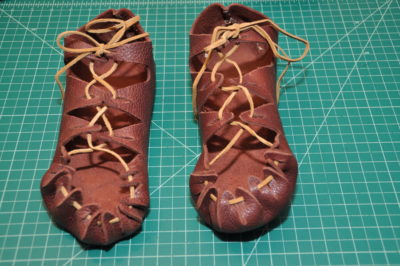
Shoes by Robert
Princess of Zweeloo
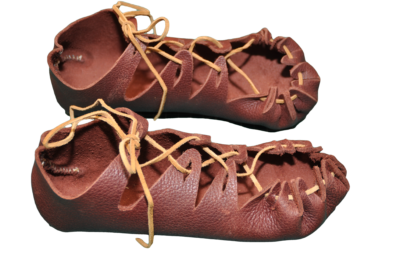
The grave of the women called the “Princess of Zweeloo,” found in The Netherlands in the 1950s, and dated to about A.D. 450, contained no remains of footwear. As part of a team effort to reconstruct her clothing, however, I chose a style appropriate to that date and place. (Very few post-Roman shoes have survived, but those that did tend to remind one of Roman designs.)
In order to to develop a pattern for her shoes, I simply enlarged a published cutting pattern until it reached a length of about 14 inches, which seemed to be an appropriate size. I then traced that onto cardstock, used a scratch awl to trace it onto leather, then cut it out.
For this pair of shoes, I purchased 5-6 oz. buffalo leather. I used artificial sinew to stitch the two back seams on each shoe.
A single lace thong running through a series of holes in the numerous tabs along the top edge of the leather holds this one-piece shoe onto the foot. The pattern of the shoe prevents not only the bunching that would otherwise result with one piece of leather closing up over the foot but presents an aesthetically pleasing appearance.
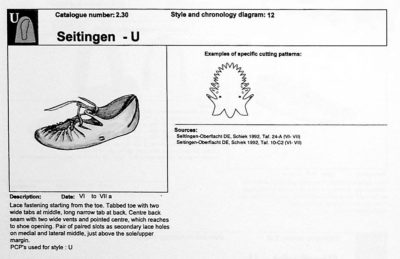
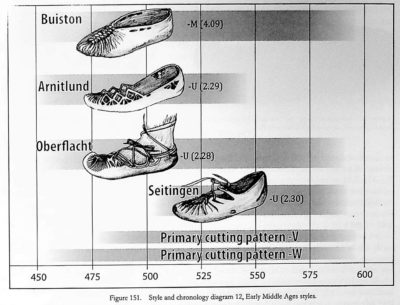
It seems clear that many early shoe styles of this type developed from Roman designs (see Goubitz et al., pp. 343, 354, 379-391 for visual comparisons)>.
Last updated April 11, 2019.
